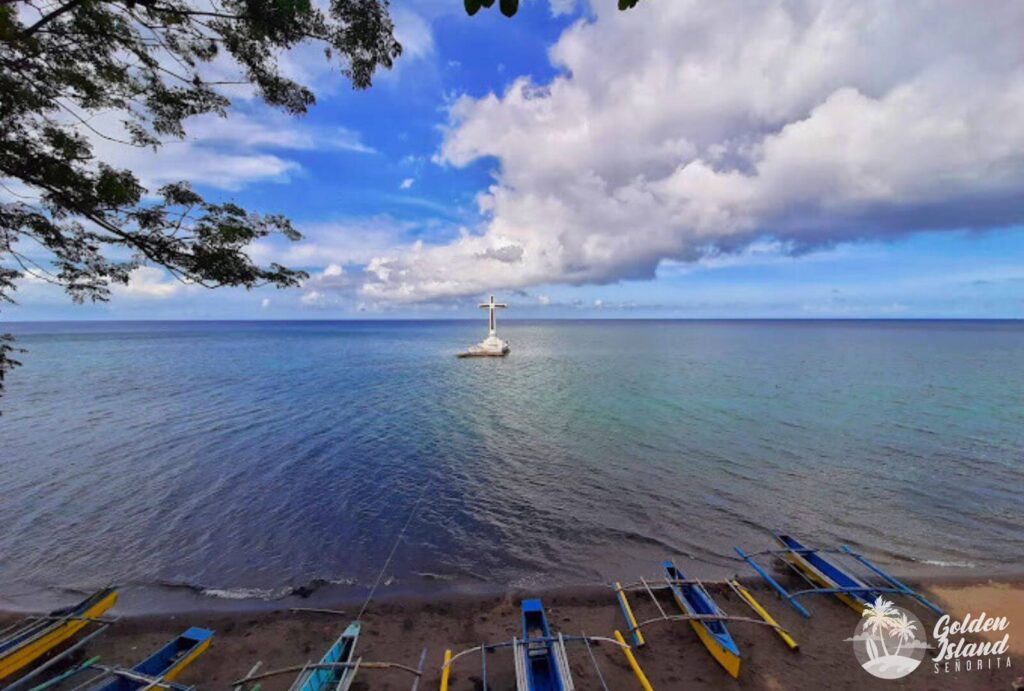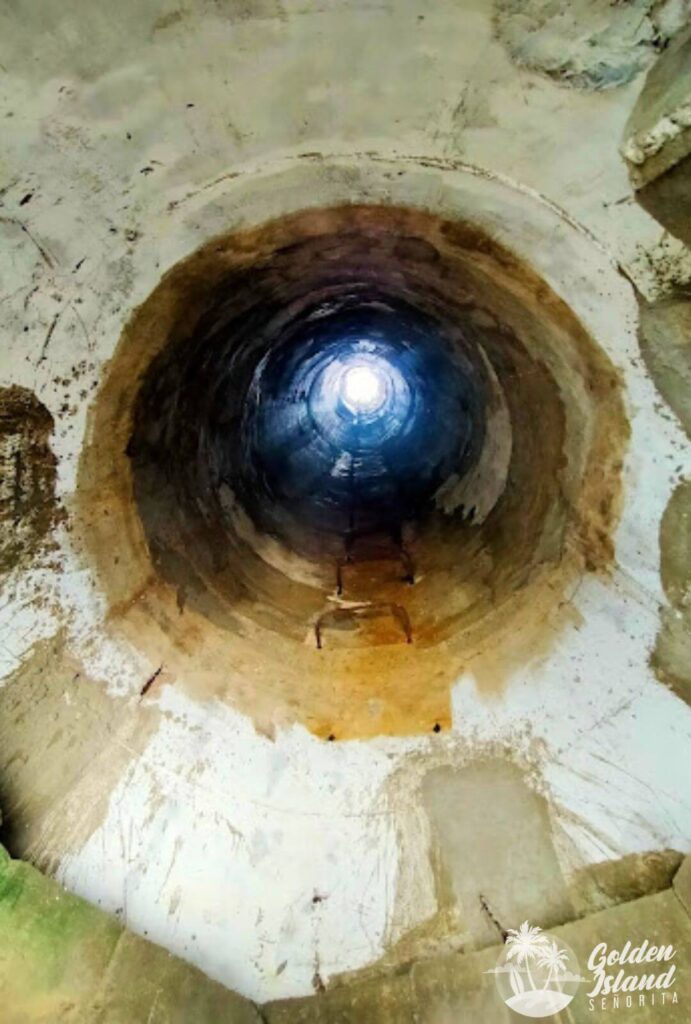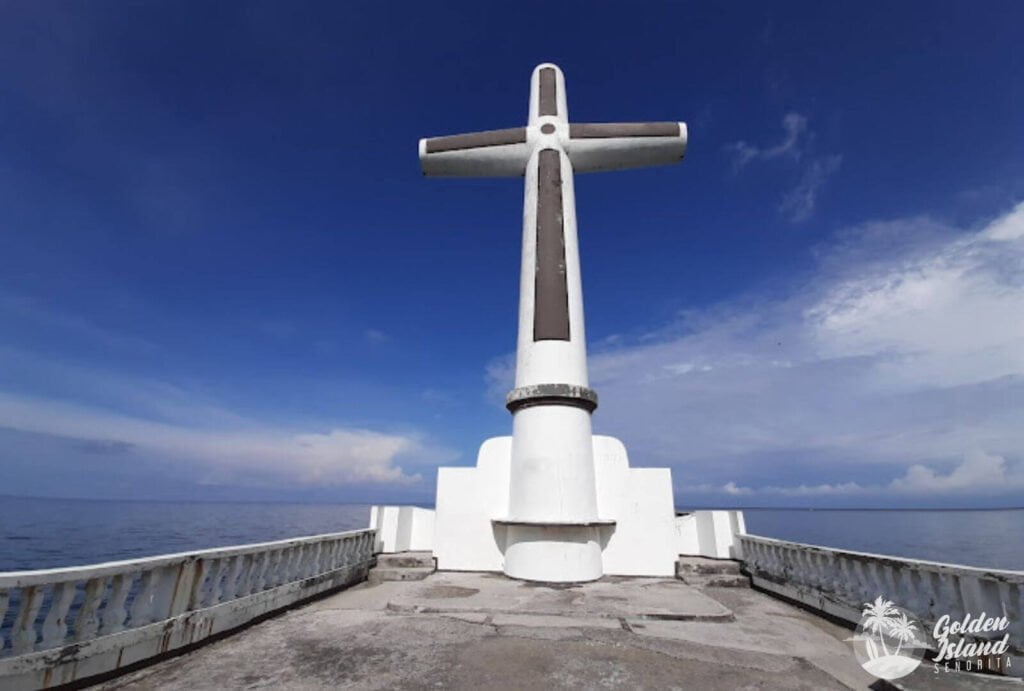The Philippines, a country known for its stunning landscapes and rich history, harbors a gem off the coast of the island of Camiguin. A peculiar attraction, both eerie and beautiful, the Sunken Cemetery stands as a testament to the island’s tumultuous past and its resilience in the face of natural forces.
Camiguin Island
Situated in the Bohol Sea, Camiguin is a volcanic island known for its natural wonders and warm hospitality. At just 238 square kilometers, this petite paradise boasts an array of attractions, from hot springs and waterfalls to its intriguing history, with the Sunken Cemetery standing out as a distinctive emblem.

The Tale Behind the Sunken Cemetery
The Sunken Cemetery, situated just off the shore of Bonbon, Catarman, holds a story as intriguing as its submerged remains. The island’s history is colored by Mount Vulcan’s eruption in the 1870s, an event that dramatically altered the island’s landscape. This catastrophic event led to the sinking of the old capital of Catarman and, with it, the community’s cemetery, which now rests beneath the sea.
Historical Significance
The Sunken Cemetery is not merely a relic of the past; it symbolizes the islanders’ resilience and the intertwining of spirituality with natural events. The sunken graves, visible from the surface, serve as a poignant reminder of the islanders’ ancestral ties and the events that shaped their existence.


Visiting the Sunken Cemetery
Travelers to Camiguin are captivated by the mystique of the Sunken Cemetery. Accessible via a short boat ride from Barangay Bonbon, this submerged memorial is a popular snorkeling and diving spot. The cross that emerges from the water marks the site, paying homage to the sunken graves beneath.
Underwater Exploration
Diving into the crystal-clear waters reveals an otherworldly sight. The eerie yet beautiful remains of the cemetery lay beneath, offering an ethereal experience for divers and snorkelers. The marine life that has made the sunken cemetery its home adds an extra layer of allure to this underwater adventure.
The Preservation Efforts
Efforts to preserve the Sunken Cemetery have been ongoing. Local initiatives aim to protect and conserve this historical site, ensuring that its significance endures for generations to come. The site’s cultural and historical importance has prompted conservation projects and initiatives to maintain the area’s ecological balance.

Beyond the Sunken Cemetery: Exploring Camiguin
Camiguin’s allure extends beyond its intriguing underwater cemetery. The island offers an array of natural wonders, including the majestic Mount Hibok-Hibok, stunning waterfalls like Katibawasan Falls, and the enchanting beauty of Ardent Hot Springs. Exploring these attractions provides a well-rounded experience of the island’s diverse offerings.
Cultural Encounters and Local Delicacies
Immersing oneself in the local culture adds depth to the Camiguin experience. Engaging with the friendly locals, exploring their crafts, and savoring the island’s delicacies, such as the famous Lanzones fruit and Camiguin’s distinctively flavorful pastries, creates a vibrant connection to the island’s identity.
Best Times to Visit
The best time to visit Camiguin and explore the Sunken Cemetery is during the dry season, which typically falls between March and May. The clearer waters during this period are ideal for underwater exploration and diving.
How To Get To Camiguin Island
By Air from Metro Manila
- From Metro Manila to Camiguin: The most common way to reach Camiguin from Metro Manila is by taking a flight to Camiguin’s main airport, Camiguin Airport (Mambajao Airport). There are no direct flights from Manila to Camiguin; hence, a connecting flight is necessary.
- Start by booking a flight from Ninoy Aquino International Airport (MNL) in Manila to either Laguindingan Airport (CGY) in Cagayan de Oro or to Mactan-Cebu International Airport (CEB) in Cebu City.
- Several airlines operate flights to these two major airports in the Philippines.
- Once in Cagayan de Oro or Cebu, take a connecting flight to Camiguin Airport (CGM). Flights from Cagayan de Oro to Camiguin take about 30-40 minutes, while flights from Cebu to Camiguin take around an hour.
By Air from Other Provinces
- From Other Provinces to Camiguin: Visitors from other provinces can follow a similar approach. Travelers can fly to either Cagayan de Oro or Cebu and then take a connecting flight to Camiguin.
- Several domestic airlines such as Philippine Airlines, Cebu Pacific, and AirAsia operate flights to both Cagayan de Oro and Cebu from various provinces in the Philippines.
- Upon reaching Cagayan de Oro or Cebu, follow the steps mentioned above to catch a connecting flight to Camiguin.
By Land and Sea:
For travelers who prefer a combination of land and sea travel:
- From Metro Manila to Camiguin by Land and Sea:
- Travelers from Metro Manila can opt for a combination of land and sea travel. Start by flying from Manila to Cagayan de Oro City.
- From Cagayan de Oro, head to the Balingoan Port via private vehicle or public transportation. Balingoan is approximately a 2 to 3-hour drive from Cagayan de Oro.
- At Balingoan Port, take a ferry to Benoni Port in Camiguin. The ferry ride usually takes around an hour.
- From Other Provinces to Camiguin by Land and Sea:
- For visitors coming from other provinces, they can similarly travel to Cagayan de Oro or other nearby cities, then proceed to Balingoan Port to catch a ferry to Camiguin’s Benoni Port.
Schedules for flights and ferries can vary, so it’s recommended to check with the airlines or ferry companies for the most up-to-date information. The journey from Manila or other provinces to Camiguin is a unique travel experience, offering opportunities to witness the beauty of the Philippines’ landscapes and coastal areas before arriving at the intriguing destination of Camiguin Island and its renowned Sunken Cemetery.
Conclusion
The Sunken Cemetery in Camiguin is a place of profound historical significance and natural beauty. Its eerie yet captivating allure draws travelers seeking both adventure and a deeper understanding of the island’s past. As visitors explore the submerged graves, they’re not just witnessing a peculiar underwater spectacle, but also paying tribute to the island’s rich history and the resilience of its people in the face of adversity.
Camiguin, with its Sunken Cemetery and myriad other attractions, beckons travelers to discover its history, culture, and the wonders of its natural landscapes. The island’s unique blend of history, spirituality, and natural beauty leaves an indelible mark on all those who have the privilege to explore its shores and dive into its underwater mysteries.


